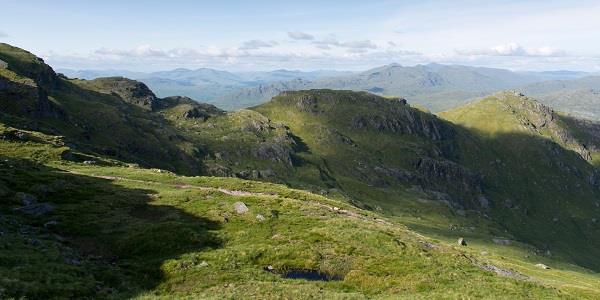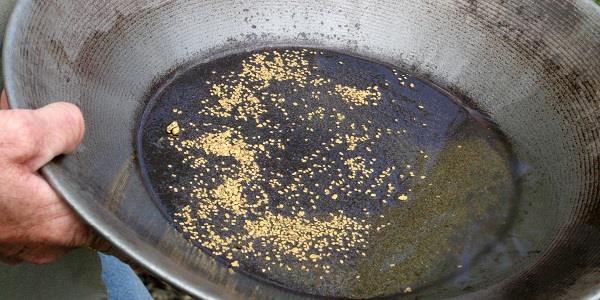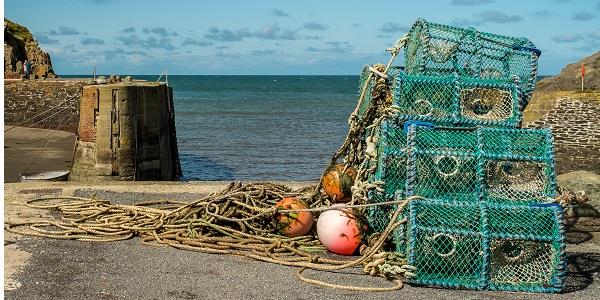
As if the magnificent mountains, bottomless lochs, wildlife and clean fresh air weren’t enough: holidaymakers have a new incentive to visit Tigh Mor Trossachs – and, if they get (very) lucky, could unearth… well, if not untold riches, at least enough to fund many future sojourns in this glorious part of the world.
There’s gold to be found all over the UK; but news of a spectacular find north of the border has reawakened prospectors’ interest in what might lie just waiting to be discovered in the Scottish burns and hills.
In July 2018 came the announcement of a find, actually made two years previously: the largest nugget to have been found above ground in Scotland in over 500 years, named the Douglas Nugget, weighing in at 2.75 Troy ounces (85.7g) and worth at least £50,000.
 The nugget was found using a technique known as ‘sniping’ – and clearly a bit of determination and endurance was called for. Sniping involves lying face-down in a river wearing a snorkel and goggles, for hours at a time.
The nugget was found using a technique known as ‘sniping’ – and clearly a bit of determination and endurance was called for. Sniping involves lying face-down in a river wearing a snorkel and goggles, for hours at a time.
Both the location of the find and the identity of the finder remain undisclosed – the former, to discourage would-be treasure-hunters from flocking to the exact-same spot; the latter, because any gold found actually belongs to the Crown. Or might – it’s a grey area. The Queen is unlikely to come demanding that you hand over your spoils, but the Crown Estate nonetheless seeks to deter ‘freelance’ prospecting. The agency cites environmental concerns; but prospectors stress that they always make good after themselves, and leave the landscape as they found it.
And the good news is that should gold fever get the better of you, there is a prime location near to Tigh Mor where you just might strike it rich.
Tyndrum lies 40 miles to the north of Tigh Mor by road along the A84 and A85 (though considerably closer as the crow flies), a journey of just over an hour by car. Tyndrum’s Crom Allt river, and the burns that feed into it, are thought to be rich in this most precious of metals.
 The Crom Allt river in Tyndrum
The Crom Allt river in Tyndrum
Collecting it, however, is another matter. To pan for gold is simple, on paper: the metal, teased over time out of underground veins of quartz by a mixture of weather and tectonic activity, is washed downstream – though at 19 times the density of water, it travels slowly. Once it hits an obstacle – the inside of a river bend, for instance – it sinks into the bedrock, where it awaits discovery by eager and/or avaricious prospectors armed only with a shovel, a pan, and a hunger for fortune. They dig up a load of bedrock – paydirt, in prospector parlance – swill it around in a wok-like pan, and the gold, being at least seven times heavier than anything else, sinks to the bottom. Get rid of the water, sand, soil and bits of rock, and that’s what you’re left with. Easy.
 That you will find gold is, if not 100% certain, highly likely. Sadly, you are unlikely to snag a Douglas Nugget to call your own, and what you do unearth probably won't cover your labour costs – what comes out of those fissures in the rock upstream are just tiny beads and flakes of gold. But it’s a fun pastime, out in the fresh air, getting plenty of exercise and making friends with fellow enthusiasts. And there’s little to beat your first sight of those little golden flecks in the bottom of your pan.
That you will find gold is, if not 100% certain, highly likely. Sadly, you are unlikely to snag a Douglas Nugget to call your own, and what you do unearth probably won't cover your labour costs – what comes out of those fissures in the rock upstream are just tiny beads and flakes of gold. But it’s a fun pastime, out in the fresh air, getting plenty of exercise and making friends with fellow enthusiasts. And there’s little to beat your first sight of those little golden flecks in the bottom of your pan.
As for the big stuff, the motherlode, a nugget to call your own – well, somebody might get lucky, mightn’t they?
Why shouldn’t it be you?

